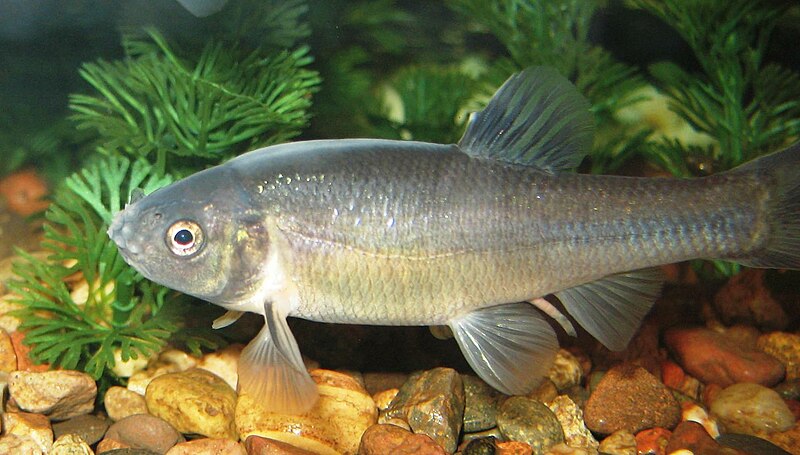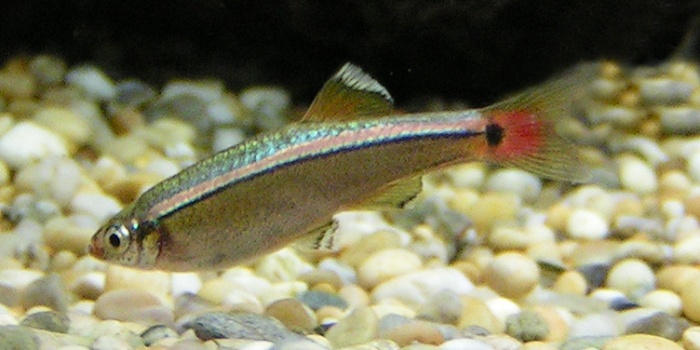| Cover Image from Amazon.com. |
Thursday, February 11, 2016
Review of Edward J. Larson's "Evolution: The Remarkable History of a Scientific Theory"
Thursday, January 28, 2016
What is a minnow?
People often ask me what constitutes a minnow. There are multiple answers, largely because the word "minnow" is much older than the science of taxonomy. This makes the set of minnows a biological granfalloon whose members may share certain features (such as small size) without sharing their recent evolutionary history.
 |
| Fathead minnow (Pimephales promelas)--a small baitfish and both a cyprinid and a leuciscin. Image by former Wikipedia user Rankin1958. Distributed under Creative Commons ShareAlike 3.0. |
If you forced a fish biologist to choose a group of fishes that fits the term (and you would have to force them, for the reasons given in the previous paragraph), they would probably choose either the carp family, cyprinidae, or a subgrouping of the cyprinids known as leuciscinae. All of the baitfishes that anglers commonly refer to as "minnows" are classified within leuciscinae, but this group has the disadvantage of being nastily esoteric when compared to the entire carp family. When the definition is extended to include all of the cyprinids, we can also add the "topminnow" (Poeciliopsis occidentalis) and the "white cloud mountain minnow" (Tanichthys albonubes), among other less famous minnows. Generally speaking, context will determine whether reference is being made to the cyprinid family or a smaller group within it.
 |
| White Cloud Mountain Minnow (Tanichthys albonubes)--A cyprinid, but not a leuciscinid. Photo by sannse. Distributed under Creative Commons ShareAlike 3.0. |
Of course, minnows can also be any type of small fish. Since the term was not created with taxonomy in mind, this is also a perfectly acceptable usage.
The set of minnows is indeed a fuzzy one, and we may have to settle on deciding that while some fishes definitely are minnows, no fishes definitely are not, and the matter has much more to do with popular usage of the word than evolutionary relatedness. To the linguistics mobile!
Tuesday, January 26, 2016
On mammoth guts
I think this is very cool: we are able to tell what woolly mammoths ate because sometimes their poop happened to land in permafrost, where it proceeded not to decompose for thousands of years. There are still little bits of undigested plant material. Fecal pollen grains lend themselves especially well to identification because their outer casings are virtually indestructible, meaning they undergo little to no digestion before being passed.
Rarely, the entire animal was frozen when it died (though not in perfect condition), and now scientists are starting to starting to sequence not only mammoth DNA but also the DNA of their intestinal microflora. The combined insights of these animals' diet and microbial symbionts are helping to illuminate the evolution of the mammalian microbiome and the dietary factors that influence it over a much longer span of time that has previously been possible.
 Image from Nova's Science Now, http://www-tc.pbs.org/wgbh/nova/sciencenow/0306/images/03-mamm-01.jpg
Image from Nova's Science Now, http://www-tc.pbs.org/wgbh/nova/sciencenow/0306/images/03-mamm-01.jpg
Rarely, the entire animal was frozen when it died (though not in perfect condition), and now scientists are starting to starting to sequence not only mammoth DNA but also the DNA of their intestinal microflora. The combined insights of these animals' diet and microbial symbionts are helping to illuminate the evolution of the mammalian microbiome and the dietary factors that influence it over a much longer span of time that has previously been possible.
Subscribe to:
Comments (Atom)